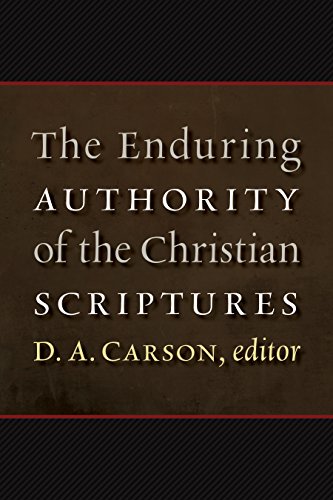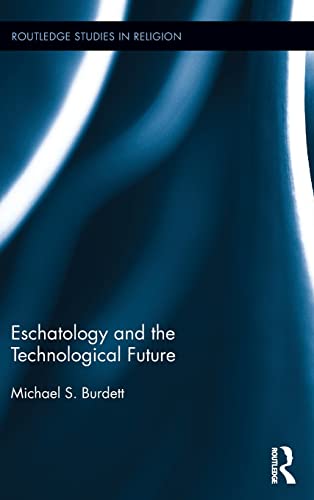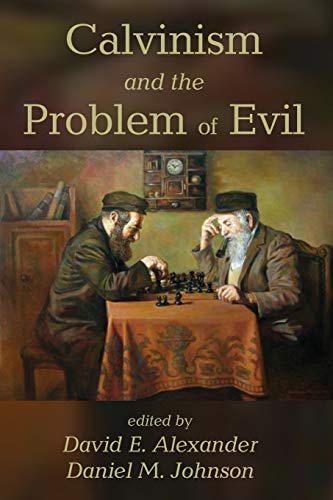Severe Compassion: The Gospel According to Nahum
Written by Gregory D. Cook Reviewed By Daniel C. TimmerThis volume, part of the Gospel According to the Old Testament series, aims to bring to pastors and laypeople a Christocentric exposition of the book of Nahum. While being accessible to a general readership, the volume under review also educates its readers on numerous fronts so as to guide them toward a robust understanding of Nahum as Christian Scripture. It does so, among other ways, by introducing readers to prominent literary characteristics of Nahum (e.g., brevity, wordplay, and allusion or intertextuality; pp. 2–3), by integrating the exposition of each section of Nahum with relevant New Testament passages, and by concluding each chapter with questions for further reflection. The book thus resembles a series of well-structured homilies that exposit the text, make use of contemporary illustrations, and press the christological significance on the reader in pastoral but direct ways.
The book’s organization essentially follows the literary order of Nahum, with a chapter of roughly fifteen pages for each pericope (1:1–2; 1:3a; 1:3b–8; 1:9–12a, etc.). Cook situates the book between the fall of Thebes in 667 BC and the end of Ashurbanipal’s reign in 627 BC (pp. 6, 72–75), and integrates various aspects of the historical background throughout the volume (e.g., p. 70, where he ties the events of 1:11 to Sennacherib’s invasion of Judah in 701). With a nod to Manasseh in particular and to Judah’s religious aberrations in general, Cook contends that “Nahum has set his prophecy in the context of God’s covenant with Judah, Judah’s rejection of that covenant, Judah’s submission to Assyrian deities, and God’s resulting curse” (p. 7). The theme of God’s “jealous love” for his covenant people (cf. 1:2) orients the exposition of Nahum as a whole, and this choice allows Cook to avoid sundering God’s wrath and justice from his love and grace (pp. 8–9). On that basis, he answers the very practical question of how Christians are to respond to our enemies in terms of Romans 12: we are to “love and forgive” those who wrong us, believing that “God sees and that God will repay.… If we choose to ignore God’s justice because it makes us uncomfortable, we also lose the power to love our enemies” (p. 10). At the same time, Cook suggests that Nahum’s message was primarily intended “to bring comfort to God” (p. 13), and only secondarily to his people. In my view, such an approach may confuse the ultimate end of all things (God’s glory) with the authorial intent (on the parts of God and Nahum alike) to call Judah to repentance and faith by announcing Nineveh’s anticipated fall as the end of its covenantal punishment (cf. 1:12–13, 15; 2:2; 3:19). More on this below.
Cook’s exposition of the book is concise but solid, not surprising given that his doctoral dissertation, completed at Westminster Theological Seminary under Michael Kelly, also focused on Nahum. He carefully explores intertextuality within the Bible (e.g., the use of Exod 34 in Nah 1:3, pp. 16–17; the use of Ps 9 in Nah 1, which shows “that David’s prayer from Psalm 9 is now answered,” pp. 55–57) and outside of it (e.g., The Descent of Ishtar, pp. 42–43; various Assyrian royal inscriptions, pp. 68, 140 and elsewhere). Cook develops the historical and theological context in which Nahum is set in the chapters in which such issues are prominent, discussing the Sinai covenant as summarized in Deuteronomy 28 and the growth of Israel during Assyria’s decline in the first half of the eighth century, among other topics. On the other hand, the claim that Judah was forced to give “allegiance and servitude” (pp. 86, 161) to Assyrian gods requires modification in light of studies like those of Mordecai Cogan, Steven Holloway, and Frederick Mario Fales. This is true also for the parallel claim that the religious element of Assyrian diplomacy “constituted spiritual rape in Nahum’s worldview” (p. 161) as well as the general idea of Judah’s forced submission to Assyrian deities (p. 7).
Cook is clearly convinced of the necessity of interpreting Nahum in a Christocentric manner (p. 31 and elsewhere), and the mention of 1 Pet 1:10–12 and Luke 24:45–47 in Iain Duguid’s series introduction reminds the reader of the propriety of this approach. Cook’s approach is well-executed in most cases, but not always. At one point Cook argues that God pursuing his enemies into darkness in 1:8b prophesies (ultimately) “the physical darkness at the crucifixion, but also Christ’s descent into hell,” with reference to the Descent of Ishtar and the Epic of Gilgamesh (pp. 41–44). This approach weakens the text’s relevance for its seventh-century BC setting (alternately an “allusion to Ishtar,” p. 43, and a prophecy of her destruction, p. 44) and depends on the presence of “ambiguity” in Nahum that enables the interpreter to “apply its message both to historical Assyria and to spiritual powers” (p. 44). This approach, however, seems to make hermeneutics do the work of biblical theology by pressing a primarily Christocentric referent upon the text in its historical setting, rather than moving from the text’s grammatical-historical sense to its progressive (and ultimately christological) fulfillment in redemptive history. Similarly, his conclusion that “the use of Belial suggests that Nahum believed that Judah had suffered from a malevolent spirit,” and the inference that this spirit was sent out from or by Ishtar (pp. 70–72), seem to force upon Nahum 1:11 a supernatural aspect (admittedly present elsewhere in Nahum, as in YHWH’s promise to destroy the Assyrian king’s gods in 1:14) and a degree of clarity with respect to demonology that is apparent only in the NT and very few OT passages (e.g., Dan 10:13). Here the hermeneutic behind the affirmation that “Nahum intended both the historical and the supernatural interpretations” of the departure of the “worthless counselor” (p. 70, with reference to Nah 1:11) requires further elaboration for the reader to understand and evaluate Cook’s interpretation.
Despite what may be a few unwarranted conclusions, the bulk of Cook’s work is exegetically convincing, hermeneutically clear, and doctrinally rich. He captures well the significance of Nahum’s Neo-Assyrian background, as when he explains the inversion of the Assyrian monarch’s leonine imagery and role in Nahum 2:11–13 (p. 131). He presents a Christocentric understanding of spiritual warfare and ably reflects at length on the ways that believers and the church combat Satan’s power by depending upon God (pp. 97–111). Throughout the work, his reflections draw upon a number of important Christian doctrines, including some that are neglected in study of the OT in particular (e.g., union with Christ, pp. 75–76; election, pp. 79–81; hell, pp. 148–51). Finally, Cook’s use of biblical theology in the Christocentric tradition of Geerhardus Vos, including the partial fulfillment of prophecy prior to Christ (p. 91), allows him to apply the gospel to his readers in numerous ways. This work deserves a wide readership and will inform, nurture, and guide all who give it the attention it merits.
Daniel C. Timmer
Daniel C. Timmer
Faculté de théologie évangélique
Montréal, Québec, Canada
Other Articles in this Issue
Gospel Differences, Harmonisations, and Historical Truth: Origen and Francis Watson’s Paradigm Shift?
by Frederik S. MulderClaiming to stand on the shoulders of the later Origen, in Gospel Writing: A Canonical Perspective, Francis B...
“For Your Sake We Are Being Killed All Day Long”: Romans 8:36 and the Hermeneutics of Unexplained Suffering
by David StarlingThis article explores the function of Paul’s citation from Psalm 44:22 within the rhetoric of Romans 8:31–39...
Many churches seem to have lost the art of singing lament...
Reflections on Handling the Old Testament as Jesus Would Have Us: Psalm 15 as a Case Study
by Dane C. OrtlundIn appreciation of the renaissance of christocentric and redemptive-historical hermeneutics and homiletics in our generation, this article selects an OT text, Psalm 15, that appears on the surface to be maximally resistant to a Christ-centered reading and preaching of Scripture...
This article examines the meaning of blessing as expressed in the structure and narratives of Genesis...







